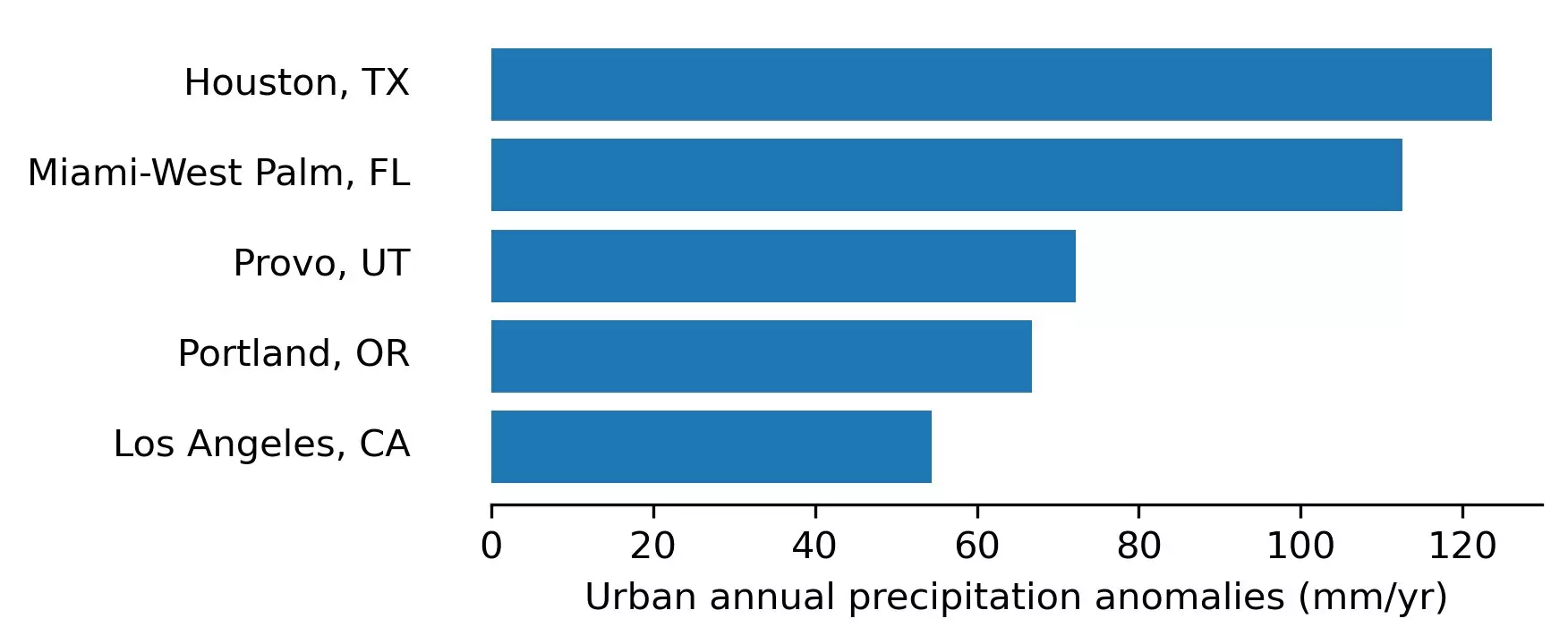Urban areas, often characterized by their concrete jungles and dense populations, possess distinct climatic traits that diverge from their surrounding rural landscapes. While it is well established that cities experience higher temperatures than adjacent countryside—known as the urban heat island (UHI) effect—the concept of urban precipitation anomalies is less understood yet equally significant. Emerging research suggests that urban development not only raises temperatures but also influences precipitation patterns, leading to increased rainfall in many cities. This article delves into this phenomenon, exploring its implications and the underlying mechanisms driving urban precipitation anomalies.
Recent investigations into urban precipitation anomalies have revealed that a significant majority—over 60%—of cities worldwide experience increased rainfall compared to their rural counterparts. This startling statistic was unveiled in a comprehensive study conducted by researchers at The University of Texas at Austin. The study analyzed precipitation data from 1,056 cities globally between 2001 and 2020, uncovering critical insights that shed light on a previously overlooked aspect of urban climatology. For instance, cities like Houston are found to receive, on average, nearly five additional inches of rain every year compared to rural areas nearby. Such stark differences can lead to severe consequences, most notably an increased risk of flash flooding in urban locales.
The concept of urban precipitation anomalies may have been known to scientists for decades, but prior research largely concentrated on isolated cases rather than examining global urban trends. This fascinating study pushes our understanding of urban climatology into new territories, incorporating data that reflects the global scale and diversity of urban environments.
Understanding why urban areas exhibit increased rainfall is crucial for addressing future climate-related challenges. One major contributing factor is the structural makeup of cities, particularly the presence of tall buildings. As noted by research team member Liang Yang, these structures can disrupt wind flow, causing it to converge towards urban centers. The blockage of wind creates conditions favorable for upward air motion, which, in turn, enhances the condensation of water vapor—critical for precipitation formation. This “sponge-like” effect encapsulated by water movement compacts rainfall into specific urban locales, translating the relatively static volume of precipitation into intense, localized downpours.
Demographic factors also play a pivotal role in rainfall anomalies. Studies indicate that cities with larger populations tend to manifest pronounced rainfall increases due to their increased density and verticality. Higher concentrations of greenhouse gas emissions from densely populated urban areas further exacerbate warming, contributing to even greater rainfall anomalies. This correlation between population density and urban precipitation underscores the urgent need to consider demographic trends in urban planning and climate adaptation strategies.
Interestingly, not all urban areas experience heightened rainfall; some cities actually receive less precipitation than surrounding regions. This trend is commonly observed in cities located in valleys or low-lying terrains, where nearby mountains considerably shape local precipitation patterns. Notable examples include Seattle, Kyoto, and Jakarta, where geographical topography influences how rain is distributed over urbanized areas. This variability in urban precipitation highlights an essential dimension of urban climatology; it signals that urban development’s impact is not uniform across regions and thus requires context-specific assessments.
As urban precipitation anomalies become a more pressing concern, the implications for city infrastructure and disaster preparedness cannot be overlooked. Dev Niyogi, another contributor to the aforementioned study, emphasizes that the convergence of increased rainfall and the impermeable surfaces typical of urban zones creates a perfect storm for flash flooding. Such circumstances necessitate innovative urban planning strategies and infrastructural adaptations to mitigate flooding risks.
Cities must develop resilient frameworks that can withstand the realities of climate change and urbanization, particularly when anticipating weather patterns that blur the line between urban and rural environments. This may involve rethinking stormwater management systems, as well as incorporating green infrastructure that enhances the natural absorption of rainfall.
The urban precipitation anomaly represents a crucial yet often-neglected dimension of urban climate research. As cities continue to grow and climate change escalates, understanding and addressing these anomalies will be imperative in fostering sustainable urban environments and safeguarding urban populations against increasingly unpredictable weather conditions. The onus is on researchers, urban planners, and policymakers to integrate these insights into future urban design and climate resilience strategies.

